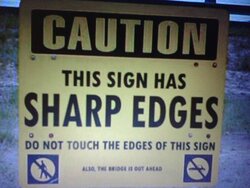E
elkimmeg
Guest
"Carbon Monoxide detectors will be required for all new fuel burning appliances, including wood, pellet, coal,stoves, gas logs
or gas fireplaces in addition to furnaces or boilers and gas hot water heaters"
This revises NFPA-54 section 10.5.4.2 with a second exception as follows:
Existing chimney shall be permitted to have their use continued when a gas conversion burner is installed and shall be
equipped with a manually reset device that will automatically shut off gas to the burner in the event of a sustained back- draft
B) for direct -vent applainces, mechanical-vent heating appliances or domestic hot water equipment where the bottom vent terminal
and the air intake is installed above 4 above grade the following requirements must be satisfied
1. If there is not one already present, on each floor level where there are bedroom(s), a carbon monoxide detector and alarm shall be placed
in the living are outside the bedroom (s) The carbon monoxide detector shall comply with NFPA 720 (2005 Edition)
2. A carbon monoxide detector shall:
a. Be in the room that houses the appliance or equipment
b. Be either hard wired or battery powered or both; and
c. shall comply with NFPA 720 (2005 Edition)
3. A product-approved vent termination must be used,and if applicable, a Product-approved air intake must be used.
Installation shall be in strict compliance with the manufacturer's instructions. A copy of the installation instructions
shall remain with the appliance or equipment at the completion of the installation
This was d adopted in the state of ma but also amended to the 2005/2006 NFPA Which now has been recognized by the International code body
Meaning it is now part of every state that has adopted the International Code Base Which all states have adopted
I typed it in from a hard copy sitting in front of me. There are similar regulations for vents below 4' to ground, except a sign above them must clearly state a vent exist below.
Monoxide regulations are the same it saved me from more typing. And some may note, my typing skills need a little work
This is so important, it could save your life. Can this be entered into a sticky note?
or gas fireplaces in addition to furnaces or boilers and gas hot water heaters"
This revises NFPA-54 section 10.5.4.2 with a second exception as follows:
Existing chimney shall be permitted to have their use continued when a gas conversion burner is installed and shall be
equipped with a manually reset device that will automatically shut off gas to the burner in the event of a sustained back- draft
B) for direct -vent applainces, mechanical-vent heating appliances or domestic hot water equipment where the bottom vent terminal
and the air intake is installed above 4 above grade the following requirements must be satisfied
1. If there is not one already present, on each floor level where there are bedroom(s), a carbon monoxide detector and alarm shall be placed
in the living are outside the bedroom (s) The carbon monoxide detector shall comply with NFPA 720 (2005 Edition)
2. A carbon monoxide detector shall:
a. Be in the room that houses the appliance or equipment
b. Be either hard wired or battery powered or both; and
c. shall comply with NFPA 720 (2005 Edition)
3. A product-approved vent termination must be used,and if applicable, a Product-approved air intake must be used.
Installation shall be in strict compliance with the manufacturer's instructions. A copy of the installation instructions
shall remain with the appliance or equipment at the completion of the installation
This was d adopted in the state of ma but also amended to the 2005/2006 NFPA Which now has been recognized by the International code body
Meaning it is now part of every state that has adopted the International Code Base Which all states have adopted
I typed it in from a hard copy sitting in front of me. There are similar regulations for vents below 4' to ground, except a sign above them must clearly state a vent exist below.
Monoxide regulations are the same it saved me from more typing. And some may note, my typing skills need a little work
This is so important, it could save your life. Can this be entered into a sticky note?


